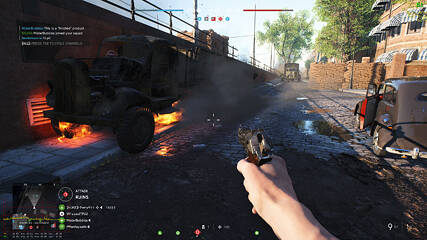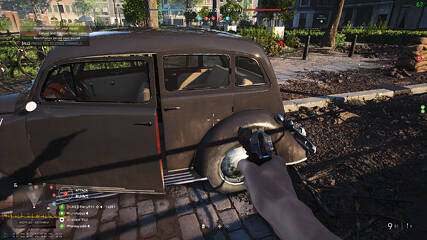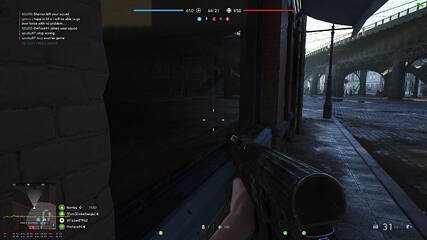 237
237
Battlefield V with GeForce RTX DirectX Raytracing Review
(237 Comments) »Introduction

If you're having a sense of deja vu, it's because we've already published an article titled "Battlefield V Performance Analysis" last week, in which we tested the Origin Access Premium early release of the game, which lacked DirectX Raytracing and NVIDIA RTX support. Three important events happened in the last 24 hours: Microsoft finally resumed rolling out Windows 10 October 2018 Update (which includes DirectX Raytracing API), EA-DICE released a day-zero patch adding DXR support to the game, and NVIDIA released the new GeForce 416.94 WHQL drivers with "launch-day" optimization for the game and RTX.
You can learn all about RTX in our Turing Architecture and RTX Technology article.
DICE's implementation of DXR involves two toggles; one lets you turn DXR on or off, and the other lets you adjust the level of detail for raytraced reflections, between low, medium, high, and ultra. To see these controls, you must meet all hardware and software requirements, which includes having an NVIDIA Turing GeForce RTX or Quadro RTX graphics card, Windows 10 1809 October 2018 Update installed, and both Battlefield V and GeForce software patched and updated, and for you to be running in DirectX 12 mode.
In this supplementary article, we are testing the GeForce RTX 2080 Ti, RTX 2080, and RTX 2070 with DXR enabled, across the many DXR reflection-quality settings in three resolutions: 1080p, 1440p, and 4K Ultra HD. We will carry over our "RTX-off" data obtained on the older version of Battlefield V, from the older article.
Screenshots
For Battlefield, the developer chose to only augment reflections using raytracing. Everything else is rendered just like before. Visually, RTX greatly improves the quality of reflections. This is unlike reflection maps in rasterization and is being rendered in real-time. You see reflections of yourself on non-planar surfaces, such as the body of a car or window panes. Reflections have existed in 3D graphics since DirectX 9.0c, using various tricks; for example, reusing data from screen and painting it on to a reflective surface (screen space reflections). This approach would fail often because it could mirror only parts of the scene that were already visible on-screen somewhere else. Mirrors (planar surfaces) were created using "portals," which are basically drawing the scene from the viewpoint of the mirror a second time and then flipping it. It was impossible to implement portals on non-planar surfaces, and it was especially difficult to create a "hall of mirrors" effect (where a non-planar surface is reflecting your image differently). You could warp a plane viewport over a non-planar surface, but it was inaccurate and very taxing on the machine.The window pane is reflecting the scenery behind the player, which wasn't possible before, without RTX. At the same time, you see part of the scene behind the glass rendered and merged accurately with the reflections.
Here, you see fine examples of reflections from the surface of a car's glossy paint job. This certainly looks more realistic than the red car in the RTX reveal tech-demo. You can see how each surface has a unique way of reflecting the image of your playable character. Warping a planar screen space reflection cannot achieve this. You can even see which weapons the characters are holding!
Here, you notice a scenario where there isn't enough ambient light to reflect you, and the room behind the window pane is too dark.
Note the scene setup: burning truck on the left and a car on the right. On the car's surface, you can see a red reflection, which is the red trim of the open door.
Now, we moved to stand right in front of the car, with the burning truck behind us. Note the faint reflection of the flames slightly above the crosshair. Also, the reflection of the red trim that we saw before is gone now, so it's not just some pre-baked visual texture effect.
Comparison RTX Low vs. RTX Ultra
Below, we've added comparisons between the "Low" (lowest) and "Ultra" (highest) settings of DXR reflections. On the left (below) is "Low," and "Ultra" is to the right. You don't lose all that much in terms of realism, but switching to "Low" significantly reduces your performance loss.Our Patreon Silver Supporters can read articles in single-page format.
Jul 29th, 2025 17:02 CDT
change timezone
Latest GPU Drivers
New Forum Posts
- Looking To Make List Of Keyboard Manufacturers (24)
- What's your latest tech purchase? (24392)
- Weird issue with Worms: Armageddon on NV GPUs (7)
- 3D Printer Club (574)
- Dell Workstation Owners Club (3338)
- RX6800XT Gigabyte Gaming OC not giving image while being on "OC" switch and even sometimes while being on "silent" switch. (4)
- 2022-X58/1366 PIN Motherboards NVME M.2 SSD BIOS MOD Collection (949)
- Kindly help me to complete my new PC build... (22)
- Upgrade from old x58 system (57)
- 6400c30 vs 8000c36 Ryzen 9800X3D (39)
Popular Reviews
- Herman Miller Logitech G Embody Review - No Pain, No Gain
- Lian Li O11 Dynamic Mini V2 Review
- Lenovo Legion 5i (15IRX10) Review - Feature-Rich and Wallet Friendly
- Upcoming Hardware Launches 2025 (Updated May 2025)
- MSI Claw 8 AI+ A2VM Review
- Noctua NF-A12x25 G2 PWM Fan Review
- Sapphire Radeon RX 9060 XT Pulse OC 16 GB Review - An Excellent Choice
- AMD Ryzen 7 9800X3D Review - The Best Gaming Processor
- AQIRYS Sirius Pro Review
- VAXEE XE V2 Wireless Review
TPU on YouTube
Controversial News Posts
- AMD's Upcoming UDNA / RDNA 5 GPU Could Feature 96 CUs and 384-bit Memory Bus (134)
- AMD Radeon RX 9070 XT Gains 9% Performance at 1440p with Latest Driver, Beats RTX 5070 Ti (131)
- NVIDIA GeForce RTX 5080 SUPER Could Feature 24 GB Memory, Increased Power Limits (115)
- Intel "Nova Lake-S" Core Ultra 3, Ultra 5, Ultra 7, and Ultra 9 Core Configurations Surface (110)
- DDR6 Memory Arrives in 2027 with 8,800-17,600 MT/s Speeds (100)
- AMD Sampling Next-Gen Ryzen Desktop "Medusa Ridge," Sees Incremental IPC Upgrade, New cIOD (97)
- Intel CEO Confirms SMT To Return to Future CPUs (95)
- NVIDIA Becomes First Company Ever to Hit $4 Trillion Market-Cap (94)
















